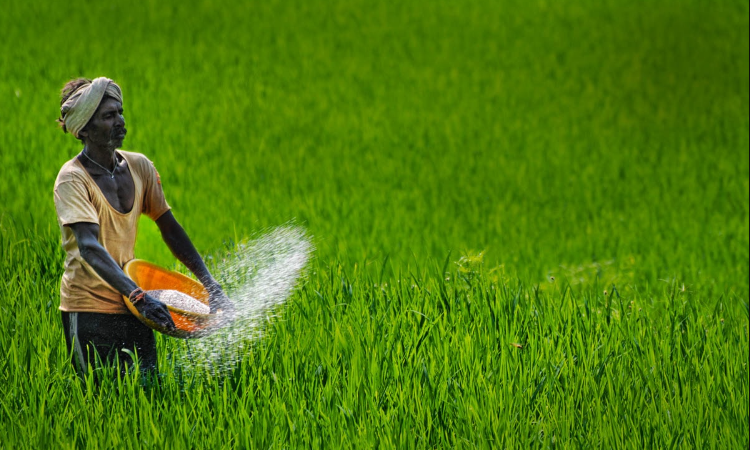
Mumbai: As El Nino threatens yields in important producers and alternative staples become more expensive for low-income Asians and Africans, global rice prices, already at their highest in 11 years, are expected to rise further.
India exports more than 40% of the world's rice, which totaled 56 million tonnes in 2022. However, low inventories mean that any reduction in shipments will increase food prices, which were already high due to the Russian invasion of Ukraine last year and unpredictable weather.
According to B.V. Krishna Rao, president of the Rice Exporters Association (REA), "India was the cheapest supplier of rice." "As Indian prices increased as a result of the new minimum support price, prices from other suppliers also began to rise."
Also Read: EU expedites arming Ukraine by sealing its ammunition production plan
More than 3 billion people rely on rice as a staple food, and nearly 90% of this water-intensive crop is grown in Asia, where the El Nino weather pattern typically results in lower rainfall.
However, the Food and Agriculture Organization's global rice price index is already above an 11-year high before the weather phenomenon can affect production.
This is despite the US Department of Agriculture's (USDA) prediction that the top six global producers—Bangladesh, China, India, Indonesia, Thailand, and Vietnam—would all produce at or near record levels.
Also Read: Attacked after the Eid Al-Adha service was a Muslim lawmaker from Connecticut
According to Nitin Gupta, vice president of Olam India's rice business, "the impact of El Nino is not restricted to any one country; it affects rice output in almost all producing countries."
Following a rise of 7% in the price the government pays farmers for new-season common rice last month, the price of Indian rice exports has increased by 9% to a five-year high.
Since then, export prices in Thailand and Vietnam have increased to levels not seen in more than two years. This incentive was put in place to entice farmers to vote in crucial state elections in India this year and a general election the following year.
In recent months, producers cut exports to control domestic costs, which caused prices of sugar, meat, and eggs to soar to multi-year highs globally.
Even though a robust Asian crop is predicted, some international trading houses predict that El Nino will reduce the output of all significant rice producers.
According to Gupta of Olam, "Rice prices have already been increasing due to limited supplies." "Price increases will occur if production falls."
According to the USDA, after the recent increase in demand, global rice inventories are expected to reach a six-year low of 170.2 million tonnes by the end of 2023/24 as stocks in the top producers China and India decline.
According to a grains dealer with a global trading house based in New Delhi, prices could increase by a fifth or more if yields drop significantly because El Nino will cause the second rice crop in almost all Asian countries to be lower than average.
Thailand, the world's second-largest exporter, has advised farmers to grow just one rice crop after May's rainfall was 26% below average.
According to government data, planting of summer-sown rice in India, which plants its second crop in November, was down 26% from a year ago as the monsoon brought in 8% less rain than usual.
Rosa Wang, an analyst with Shanghai JC Intelligence, stated that despite unfavourable weather conditions for the early-season crop in China, the world's largest grain producer, high stockpiles will balance supply and demand.
The ruling party in India is always concerned about food inflation, so last year it banned wheat exports and restricted rice and sugar exports to lower prices.
The Bharatiya Janata Party (BJP), led by Prime Minister Narendra Modi, is concerned about the slow start of planting in the face of rising domestic prices as elections draw near, raising the possibility that this will further stifle exports.
According to the dealer based in New Delhi, the Indian capital, "the Modi government is struggling to contain the rise in wheat prices, which is why it would not hesitate to impose restrictions."
Other nations would struggle to make up for Indian supply curbs, according to industry officials.
"The supply situation is extremely tight, and a reduction in Indian exports could potentially lead to a surge in global prices," said a dealer with a global trading house based in Singapore.
The dealer added that Myanmar, Pakistan, Thailand, and Vietnam as a whole could increase exports by 3 million to 4 million metric tonnes.
The task of accumulating stockpiles is made more difficult by the price surge.
According to the executive director of Indian exporter Satyam Balajee, Himanshu Agarwal, demand from price-sensitive African nations has decreased.
However, some Asian consumers, including those in Indonesia and the Philippines, have been increasing their purchases from Vietnam, a longtime supplier.
Also Read: Four people were killed when a missile hit an apartment block in Lviv, Ukraine
In a rare agreement last month, Indonesia and India agreed that if El Nino disrupts domestic supply, they would import 1 million tonnes. The usual sources of Indonesia's rice imports are Vietnam and Thailand.
According to the Singapore-based dealer, "Rice has been a buyers' market for the past few years, but it could change to a sellers' market if El Nino reduces production."